- Walking Dead Saints and Sinners Best Weapons - July 31, 2023
- Pistol Whip Style Guide - June 8, 2023
- Bonelab Best Mods: Our Top 16 - February 15, 2023
VR has always been a space for innovation, but even more so over the last few years. Games like BONEWORKS and Half-Life: Alyx showed the world what the medium was capable of from a technical standpoint, while other smash hits like Beat Saber reinvigorated age-old concepts for a modern audience.
The creative freedom of virtual reality is deep, exciting, and multifaceted, a sentiment which is embodied in Changingday’s debut title, Blinkk: and the vacuum of space. The game featured in this BLINKK and the Vacuum of Space review is built from the ground up to push the importance of accessibility in games, and it’s the first of its kind in the VR arena to prioritize autistic players.
It’s a bold challenge and something we’ve never really seen before. VR initially seems a double-edged sword for this population: on one hand, it’s a medium with limitless potential to immerse a player with diverse needs, but the impalpable otherworldliness of the experience also has the potential to overwhelm them.
I initially wondered how a game made for autistic people would resonate with my mostly neurotypical mind, but as the credits rolled, I understood.
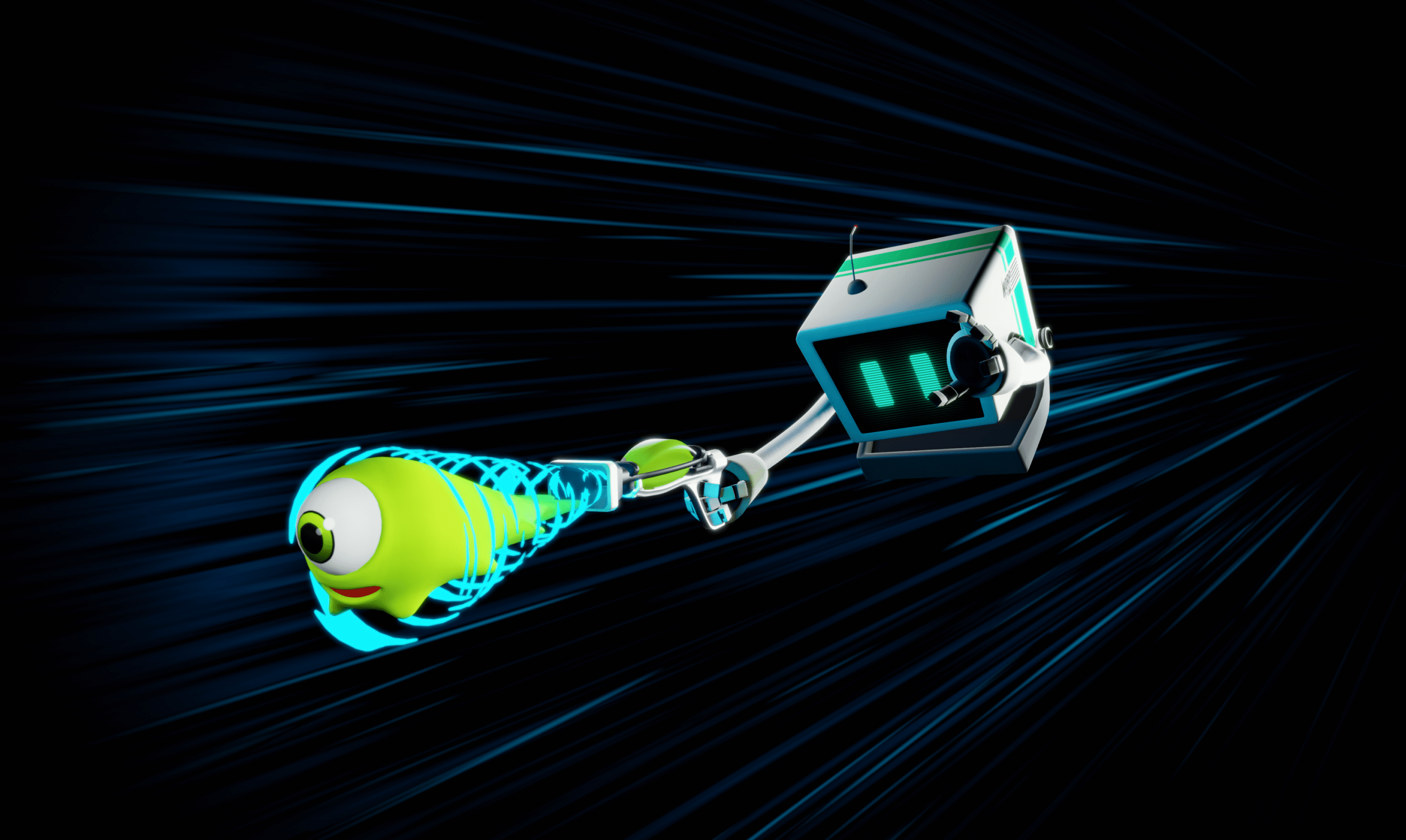
Needs Must
BLINKK is a short adventure of around two to three hours long. Set aboard a vast space station, our primary objective as the assistant’s assistant is to swiftly and covertly rectify an imminent and escalating disaster: the inability to synthesize the ultimate sandwich before the boss, Mr. Norp, arrives to taste it.
You play as the aide to a chatty robot called BLINKK, the robotic right hand to Mr. Norp, and there’s a problem with the ingredients. Little gelatinous creatures called Groobs are required for the creation of Norp’s expectedly sublime lunch and, thanks to BLINKK’s incompetence, they’ve escaped all over Norpopolis.
Armed with the Vacuumiser 5000, it’s yours and BLINKK’s job to get them back. Of course, you must get the Groobs back without anyone finding out about the disaster: this means you’ll be going undercover to fool the workforce of Norpopolis that you’re there to do a job as you stealthily recover the escapees.
But before you get to any of that, it’s time to dial in some settings.
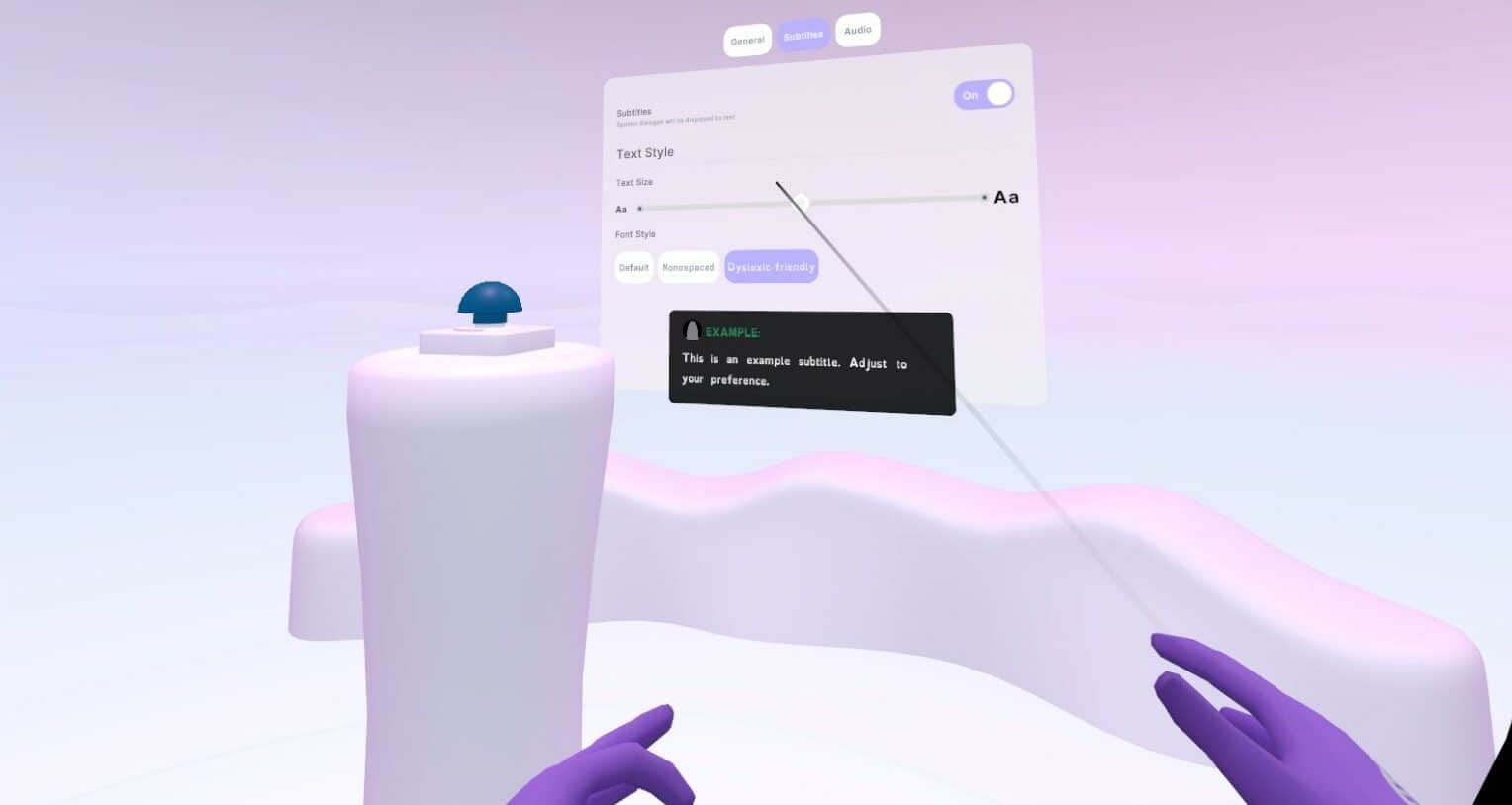
Attempts to create a calming environment are obvious straight away. Launching a new game brings the player to The Fold: a gentle, meditative space narrated by the soothing tones of a disembodied entity called Galaxiom. It’s here that we’re introduced to a diverse menu of options to suit the player, from an extensive list of audio settings to dialing in comfortable play positions and on-screen text appearance.
As expected, the devs have gone above and beyond the traditional comfort options you’d typically find. We’ve got settings like changing on-screen text to a dyslexic-friendly font and advanced choices for turning sound effects for explosions and lasers on or off.
We’re also taught about the Interdimensional Smartwatch. The device allows the player to be immediately transported back to this safe space at any moment, and I think this is something the industry as a whole would do well to adopt. The feature has an obvious benefit for autistic individuals in that if they get stressed at any moment, they can calmly and safely escape the situation.
Something similar would be great for beginner and expert players alike, regardless of where they are on the neurological spectrum. VR can get a little much for most people sometimes, and this quality-of-life feature would go a long way in broadening the appeal.
My mum certainly would’ve benefited from an Interdimensional Smart Watch when she tried to physically run away from a Stryder in Half-Life: Alyx, spectacularly toppling my rig as she went. In making VR more accessible for autistic people, Changingday has too introduced concepts to make the platform more approachable for everyone.
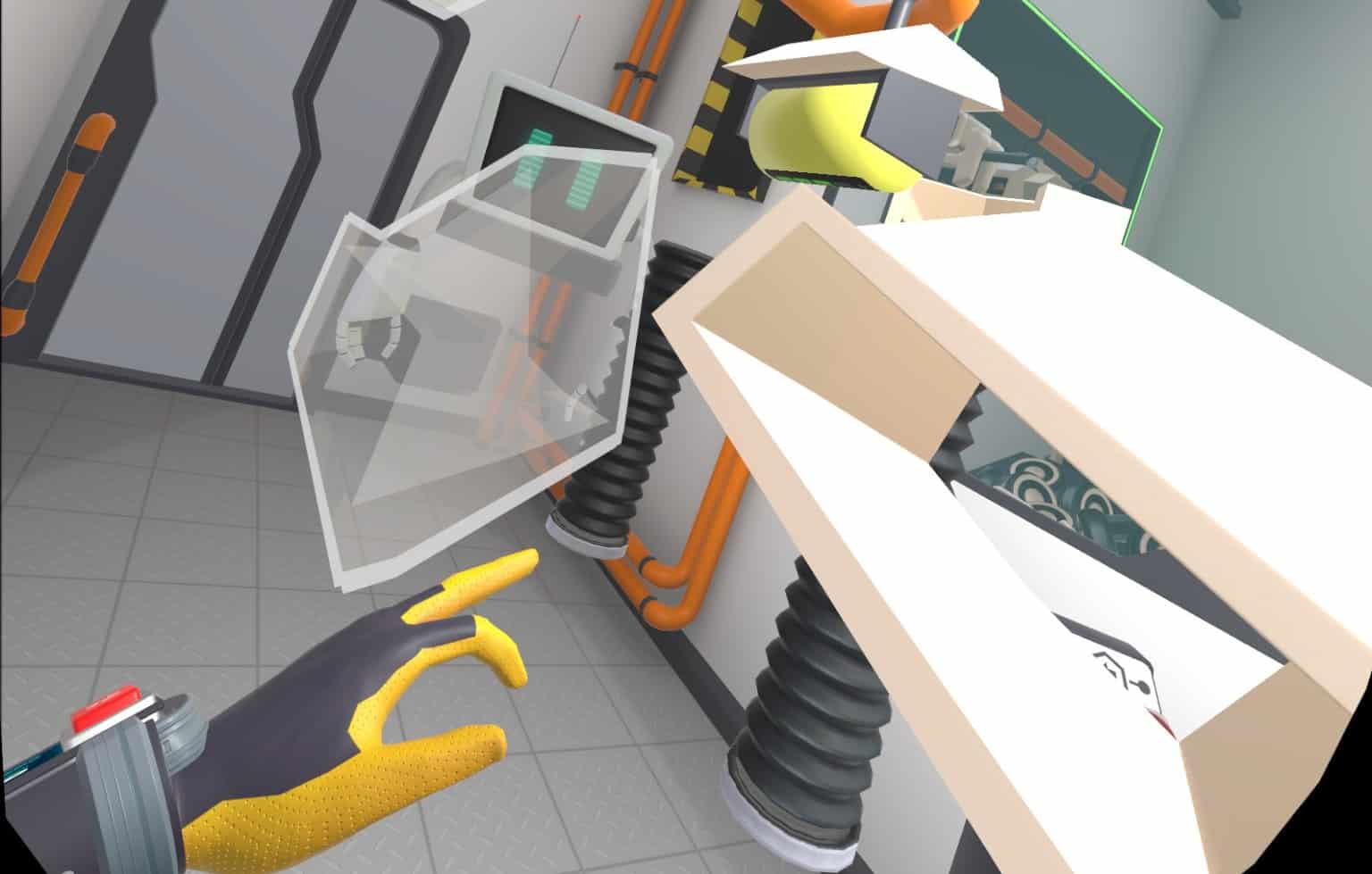
The game’s catering to neurodiversity extends far beyond a wrist-mounted escape button and some extra settings. Every design choice has been meticulously scrutinized to cater to the autistic mind, and the game is filled with numerous alterations to make the play space feel as safe as possible.
Colors are mixed to be less distracting, and each environment has its interactable parts close by without the need for potentially disorientating and nauseating teleportation; there’s no fail state or deaths in the game, and a tuneable radio set offers focus music as the player engages with the tasks at hand.
Norptacularly Splendiferous
Of course, graphics are always going to be a big part of the experience when it comes to VR. Balancing on a spectrum of nauseating to entrancing is always a challenge for developers, but Changingday has done a mostly good job rendering this cutesy alien world.
The game follows the trend of a lot of indie VR titles we’ve seen in the past. It features colorful, mostly texture-less designs of a sterile yet pleasant sort of aesthetic with characters that are visually lively and expressive. The animation does leave something to be desired, though.
The aliens can look a little low poly at times with rough shapes and jagged mouth movements, and there are some low-res textures here and there (particularly character eyeballs). There also seemed to be some geometry clipping during expressions. The framework is there for a great-looking game, but it’s obvious things need smoothing out here and there.
As far as the characters go, BLINKK is the star of the show here. His animations, textures, and overall designs are on point, and he wouldn’t look out of place in any big-budget title. I’m sure every kid has imagined being part of the world of their favorite Pixar or DreamWorks movie at some point, and this game’s wacky world comes pretty close to something like Monsters Inc.
BLINKK’s nervy personality is reminiscent of so many animated characters we’ve fallen in love with over the years, but the writing imitates in a way that’s endearing rather than lazy.
The voice acting is fitting for the setting and audience and well delivered throughout. The script can be a little twee for the adult crowd but did make me chuckle from time to time, and I admired the innocence of it all. I also appreciated the subtle undertones of the writing for how it championed the sentiment of one’s own individuality.
It was a nice message that taps into the innate ability of video games to leave a long-lasting impression, which was solidified with Galaxiom’s short monologue at the end of the game.
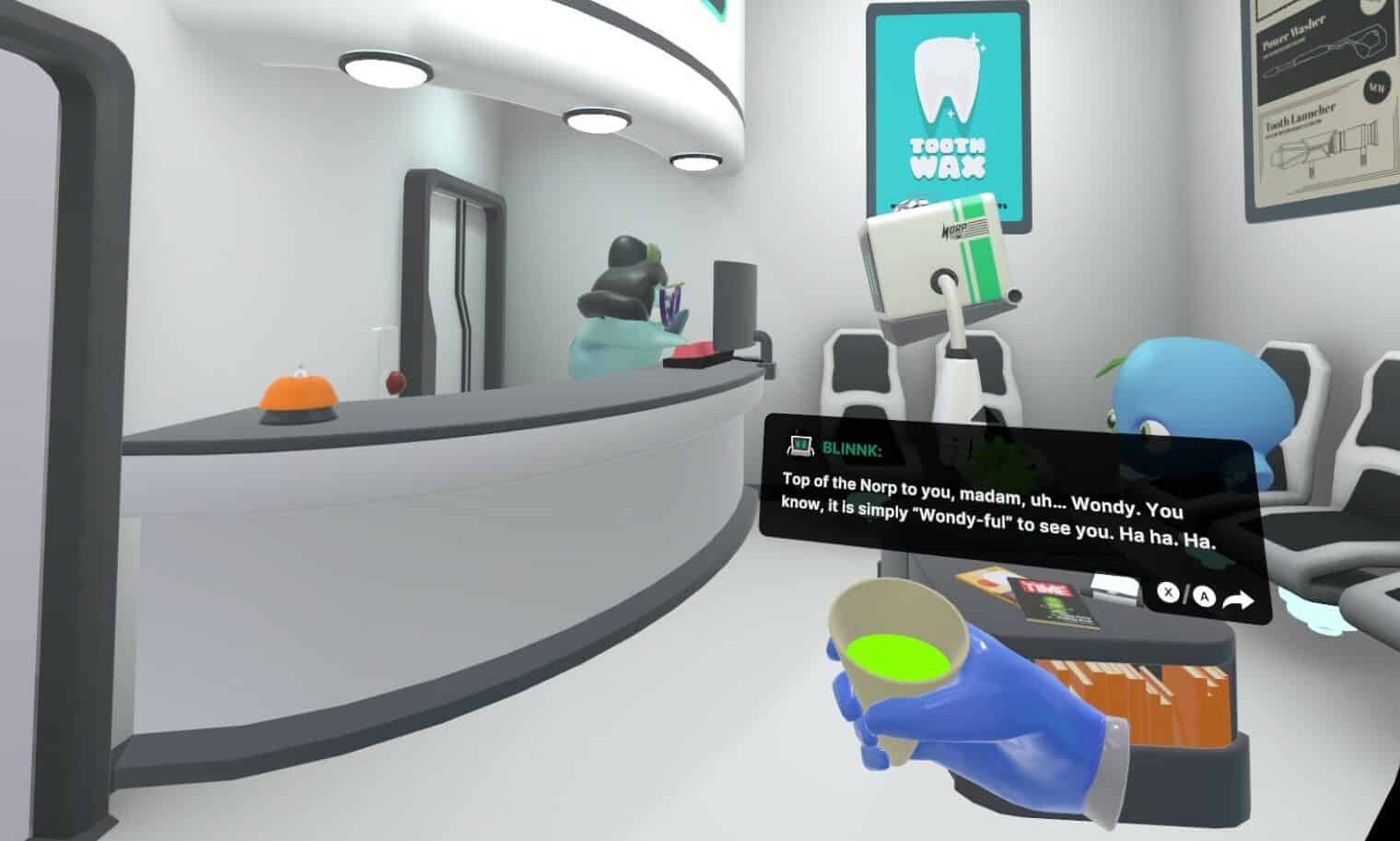
I also apricated the little touches. Your in-game hands don the apparel associated with the tasks you’re performing (green sewn gloves for gardening, shiny blue latex for dentistry, and so on), and I particularly liked how the machinery was designed to look and function as something out of Cartoon Network shows like Dexter’s Laboratory or The Power Puff Girls. In fact, the whole thing had a Saturday morning cartoon vibe throughout — an infectious absurdity I came to enjoy the more I played.
These levels are more than just a mess about silly toys and conversations with madcap aliens, though.
Covert Groob Brigade
BLINKK: and the Vaccum of Space presents four separate levels, with each new stage presenting a multifaceted gameplay challenge. It’s here where the unique accessibility crosses from acute tweaks to deeper feats of design.
The levels aim to replicate difficult or potentially threatening scenarios autistic people have been known to face and to modify them into something positive: a fun, immersive, subtly educational challenge.
While I can’t hope to fully understand the impression these levels have on autistic people, it’s plain to see how they would be helpful and engaging — exploring the alarming ambiguity of the dentist by shrinking the player and having them power wash plaque, for example. Each stage takes the player through something familiar from a new perspective.
You’ll also need to ensure you’re catching any Groobs you see along the way. There is a finite amount to suck up in each stage, and in many instances, they actively sabotage your progress. At the end of each level, the Groobs you caught are dispensed back at the base.
There’s no true gamic challenge in the typical sense. There isn’t a fail state, and there are no deaths or time limits, either. In many ways, the experience bridges the gap between sensory VR apps and traditional games, and it’s something only this medium can do. Stages facilitate a sort of pleasant monotony: the same satisfying feeling you might get from building a Lego set or wrapping presents.
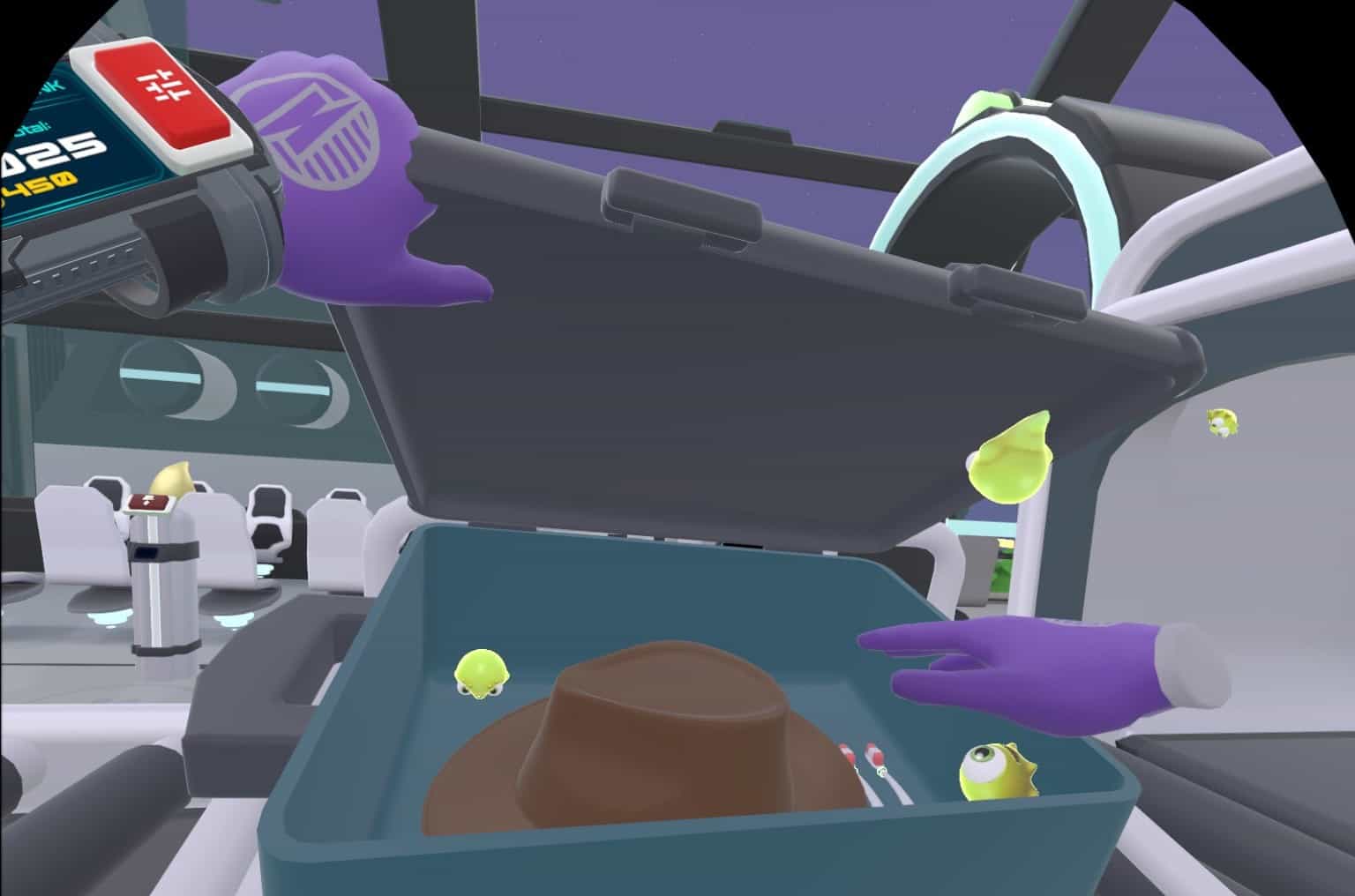
I did occasionally find catching Groobs to get in the way of this flow state, however. One of the tasks have you catching fish with a rod, but about half the time you’d end up with a Groob dangling off the end instead. Every time this happened, you needed to put the rod back in its holder, pull out the Vacuumiser to suck it off the end, and then go back to your fishing. These occurrences were few and far between, but they were a pain when they happened.
Part of me did also wish for some extra challenge after completing the game. You can go back to any of the levels after the credits role, but given the type of gameplay these levels hone, I’d love to have had the opportunity for a time trial or something of that ilk: something that allowed me to test my efficiency at performing these tasks that I was starting to become rather good at. Of course, this would go counter to the aforementioned criteria for catering to autism, which raises a few questions.
The overall design does mean that replayability is limited, and while I enjoyed my experience, I had no real incentive to go back in after I finished. There is a fifth level in the works that’s set to release shortly, and considering half of the level map remains empty, I’d hope more will be added in the future.
The Verdict
Score: 7.5/10
Even just at face value, there’s a lot to praise BLINKK: And the Vacuum of Space for. For all its innovative potential as a platform, it’s actually pretty uncommon to find VR titles that impress with their foresight to think outside the box and try something radically different.
Ultimately, Changingday has somewhat flipped the medium of virtual reality on its head: what’s often thought of as a rather scary, somewhat threatening and uncontrolled modality of play felt one of the safest, calming mediums you can engage with — a whimsical few hours of escapism with a multitude of lessons to teach the player.
For all its positives, the game does feel more of an experiment than a complete experience at times — a proof of concept that VR can be used to cater to its target audience, as opposed to a full release with all the bells and whistles of a modern game. Nevertheless, the platform needs the sort of foresight found here to flourish, and with the next generation of VR approaching, studios like Changingday should be at the forefront.
It’s not perfect and could use some polish, but BLINKK reiterated that VR is more than the sum of its parts. Technological advancement may seem the most important thing for us VR enthusiasts, but evidently, the victories of the platform are multi-dimensional. I’m excited to see what the team does next.
Pros
- Satisfying, therapeutic levels that were clearly defined from one and other
- A positive subtext that permeates all elements of the game throughout
- Tools and equipment are cleverly designed and fun to use
Cons
- Some rough animations and textures with a couple of gameplay elements that need tweaking
- Very short as it stands now
- Lack of traditional gamic features and incentive for replaying may put people off
Alternatives
Here are some other titles you might enjoy if the concepts of this game interest you.
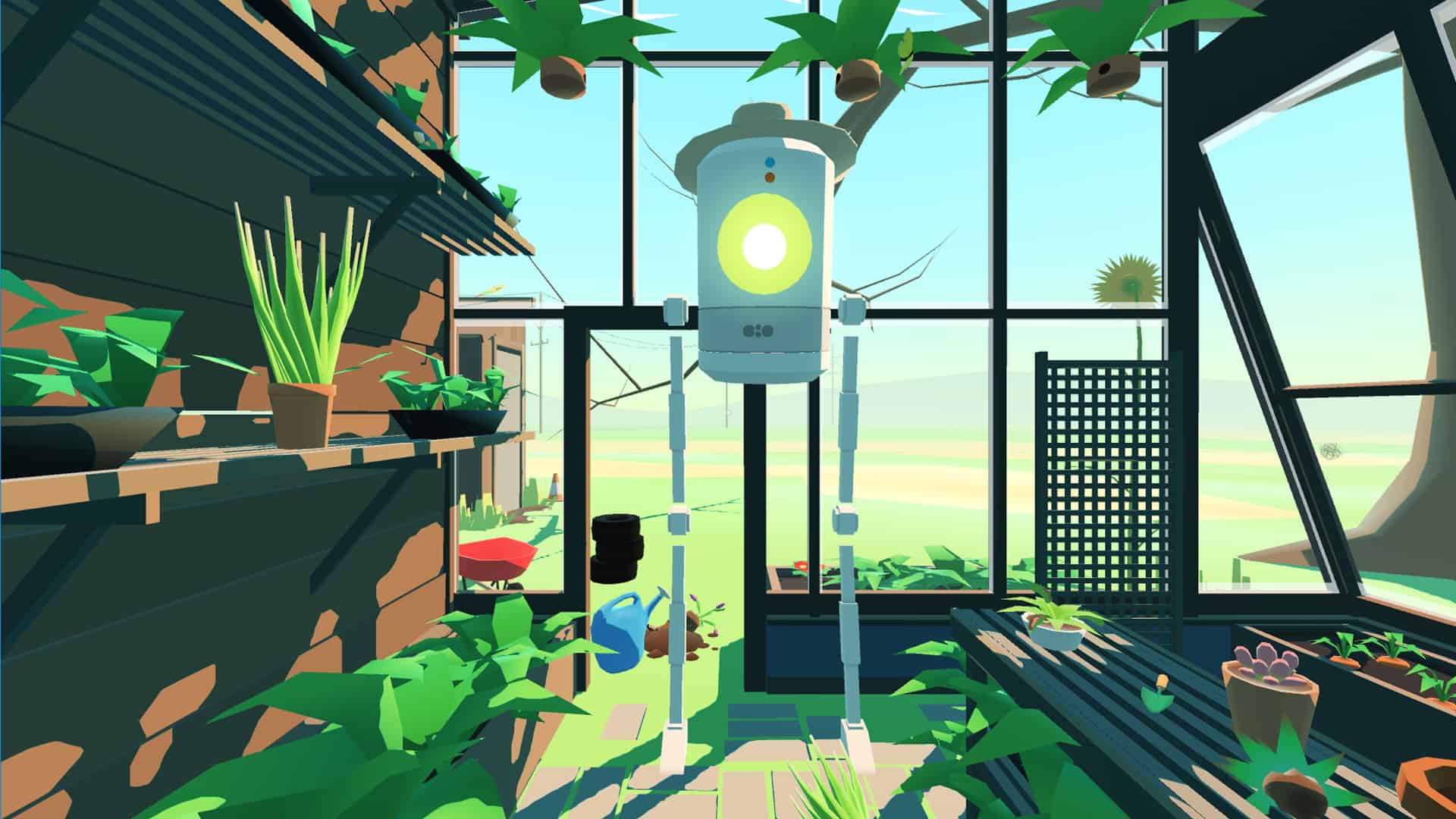
- Virtual Virtual Reality 1 & 2
- Fuji
- Paper Valley
- Minecraft VR
- Synth VR
- Exogen VR
- Electronauts
- Portal Stories VR
Frequently Asked Questions
Question: Does it matter whether I play using a tethered or untethered headset?
Answer: For this game and the population it’s made for, untethered would be ideal. According to my interview with creative director Robbie Cargill, the game is very much made with Quest 2 in mind. It makes sense that untethered gameplay would be the least restrictive for neurodiverse players. Having said this, I played the game on the Oculus Rift S with no issues.
Question: Is there a recommended age for this game?
Answer: The age rating is PEGI 3, though I suspect the player would need to be at least around eight years old to get the full experience (to be able to work out the puzzles, understand the dialogue and subtext, and master VR movement).
Question: My autistic son/daughter would like to try the game, but we don’t have a VR headset. Will there be a non-VR version?
Answer: While a non-VR version of the game might theoretically work, it’s highly unlikely to happen. VR is a crucial component in facilitating the game’s quirks, and without it, much of its identity would be lost.
Play Log
Linden completed the game in around three hours. He’ll be going back in for more as soon as the new level launches. For more information on BLINKK: and the Vacuum of Space, check out our interview with the developer here on the site!

